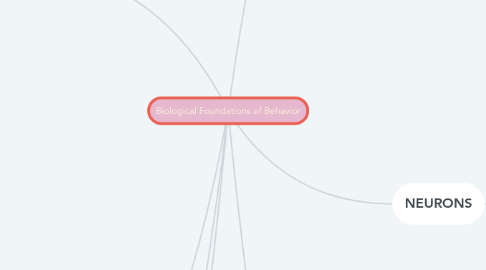
1. STRUCTURES OF THE BRAIN AND THEIR FUNCTIONS
1.1. How Researchers Study the Brain and Nervous System
1.1.1. BRAIN LESIONING
1.1.2. ELECTRICAL RECORDING
1.1.3. BRAIN IMAGING
1.2. How the Brain Is Organized
1.2.1. HINDBRAIN
1.2.1.1. brain stem
1.2.1.2. brain stem
1.2.2. MIDBRAIN
1.2.2.1. reticular formation
1.2.3. FOREBRAIN
1.2.3.1. Limbic System
1.2.3.1.1. amygdala
1.2.3.1.2. hippocampus
1.2.3.2. Thalamus
1.2.3.3. Basal Ganglia
1.2.3.4. Hypothalamus
1.3. The Cerebral Cortex
1.3.1. NEOCORTEX
1.3.2. LOBES
1.3.2.1. occipital lobes
1.3.2.2. temporal lobes
1.3.2.3. frontal lobes
1.3.2.4. parietal lobes
1.3.3. SOMATOSENSORY CORTEX AND MOTOR CORTEX
1.3.3.1. somatosensory cortex
1.3.3.2. motor cortex
1.3.4. ASSOCIATION CORTEX
1.3.4.1. Association cortex or association area
1.4. The Cerebral Hemispheres and Split-Brain Research
1.4.1. corpus callosum
1.4.2. LEFT HEMISPHERE FUNCTION
1.4.3. RIGHT HEMISPHERE FUNCTION
1.4.4. RIGHT-BRAINED VERSUS LEFT-BRAINED
1.5. Integration of Function in the Brain
2. THE ENDOCRINE SYSTEM
2.1. endocrine system
2.2. Glands
2.3. hormones
2.4. pituitary gland
2.5. adrenal glands
2.6. pancreas
2.7. ovaries
2.8. testes
3. BRAIN DAMAGE, PLASTICITY, AND REPAIR
3.1. The Brain’s Plasticity and Capacity for Repair
3.2. Brain Tissue Implants
3.2.1. stem cells
4. PSYCHOLOGY’S BIOLOGICAL FOUNDATIONS AND HEALTH AND WELLNESS
4.1. Stress
4.2. stressors
5. THE NERVOUS SYSTEM
5.1. Characteristics of the Nervous System
5.1.1. COMPLEXITY
5.1.2. INTEGRATION
5.1.3. ADAPTABILITY
5.1.3.1. plasticity
5.1.4. ELECTROCHEMICAL TRANSMISSION
5.2. Pathways in the Nervous System
5.2.1. afferent nerves or sensory nerves
5.2.2. Efferent nerves or motor nerves
5.3. Divisions of the Nervous System
5.3.1. central nervous system (CNS)
5.3.2. peripheral nervous system (PNS)
5.3.2.1. somatic nervous system
5.3.2.2. autonomic nervous system
5.3.2.2.1. sympathetic nervous system
5.3.2.2.2. parasympathetic nervous system
6. NEURONS
6.1. mirror neurons.
6.2. glial cells or glia
6.3. Specialized Cell Structure
6.3.1. cell body
6.3.2. dendrites
6.3.3. axon
6.3.4. myelin sheath
6.4. The Neural Impulse
6.4.1. resting potential
6.4.2. action potential
6.4.3. all-or-nothing principle
6.5. Synapses and Neurotransmitters
6.5.1. SYNAPTIC TRANSMISSION
6.5.1.1. Synapses
6.5.1.2. neurotransmitters
6.5.2. NEUROCHEMICAL MESSENGERS
6.5.2.1. Acetylcholine
6.5.2.2. GABA
6.5.2.3. Glutamate
6.5.2.4. Norepinephrine
6.5.2.5. Dopamine
6.5.2.6. Serotonin
6.5.2.7. Endorphins
6.5.2.8. Oxytocin
6.5.3. DRUGS AND NEUROTRANSMITTERS
6.6. Neural Networks
7. GENETICS AND BEHAVIOR
7.1. Chromosomes, Genes, and DNA
7.1.1. chromosomes
7.1.2. deoxyribonucleic acid (DNA)
7.1.3. genes
7.2. The Study of Genetics
7.2.1. dominant-recessive genes principle
7.2.2. dominant-recessive genes principle
7.2.3. SELECTIVE BREEDING
7.2.4. GENOME-WIDE ASSOCIATION METHOD
7.2.5. BEHAVIOR GENETICS
7.2.6. MOLECULAR GENETICS
7.3. Genes and the Environment
7.3.1. genotype
7.3.2. phenotype

